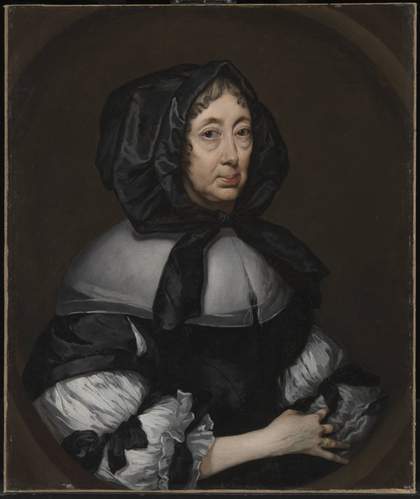
Fig.1
Peter Borseller active 1644–1687
Portrait of Katherine Hoby
c.1670
763 x 641 mm
T14039
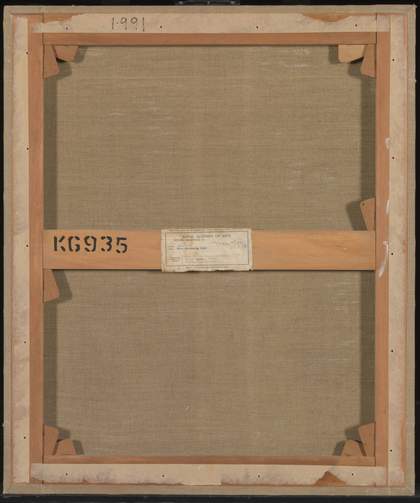
Fig.2
Reverse of Portrait of Katherine Hoby, showing the lining canvas and replacement stretcher
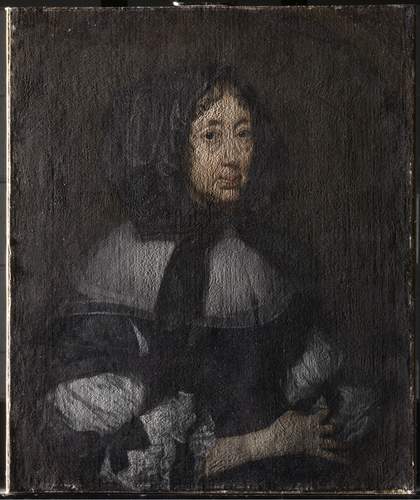
Fig.3
Portrait of Katherine Hoby seen in raking light from the left
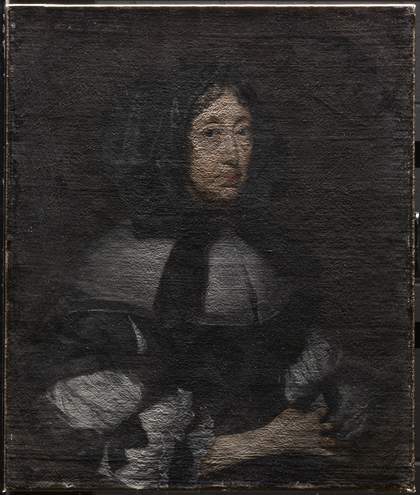
Fig.4
Portrait of Katherine Hoby seen in raking light from the top
The painting (fig.1) was purchased in 2014 and has not required any conservation treatment, nor accompanying technical examination.1 The canvas support was glue lined (fig.2) and the stretcher replaced prior to purchase, likely at mid- or later twentieth century, so its original dimensions cannot be verified. Images taken in raking light from the left (fig.3) and from the top (fig.4) show a faint crack pattern in the paint that corresponds to the diagonal corner-braces of the original stretcher, which were thin and placed rather close to the corners, compared to other surviving stretchers from the seventeenth century.
The dull, pale pink priming can be seen under magnification, through fine brittle cracks in the black paint.
The raking light images also show that the paint is uniformly thin and is in good condition, with no evidence for compositional changes. Ageing cracks are noticeable in the face, which has the thickest paint, the impasted areas being slightly compressed by past lining. The brushwork for the black fabric is loose and confident.
The last treatment, prior to the painting entering Tate’s collection, included many small retouches to the arm and the face, and at the top right corner. A new varnish of natural resin type was applied. Earlier varnish or varnishes were removed during this treatment, evidenced by some cotton wool fibres from the process now embedded within the paint, and lying beneath the varnish.
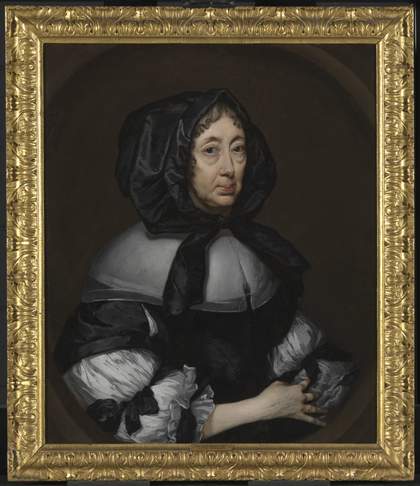
Fig.5
Portrait of Katherine Hoby in its frame, after surface cleaning
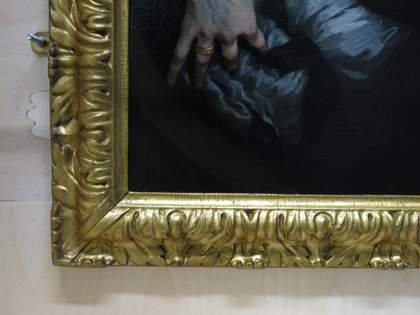
Fig.6
Lower left corner of the frame, with the colour adjusted to render the gilding accurately
The frame (fig.5), shown in detail in fig. 6, is not contemporary with the painting, and is made of gilded compo moulding, a technology used increasingly through the nineteenth century.
October 2018
